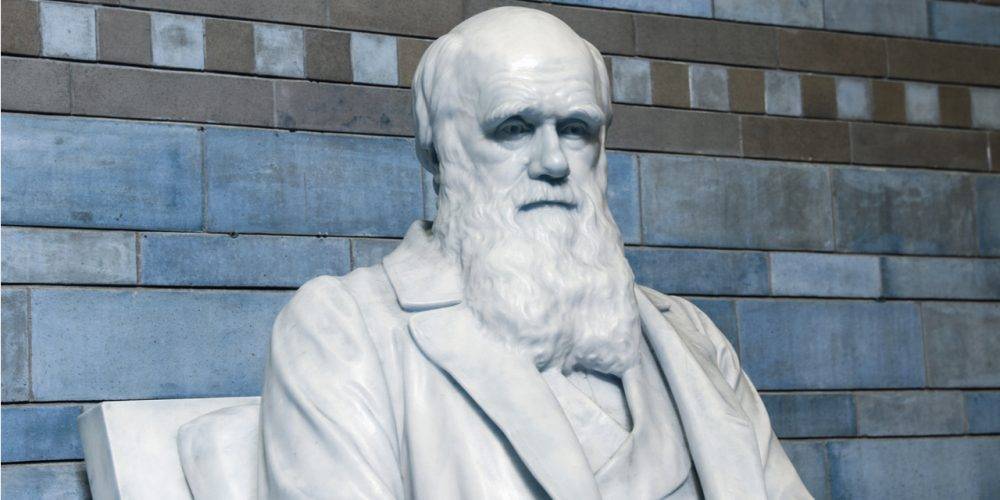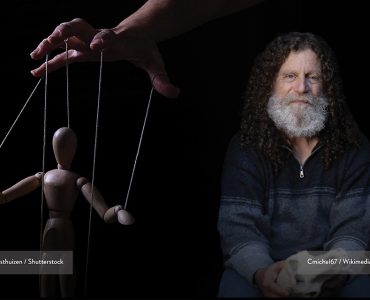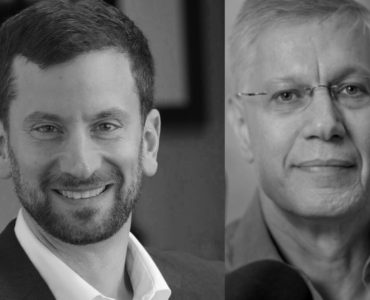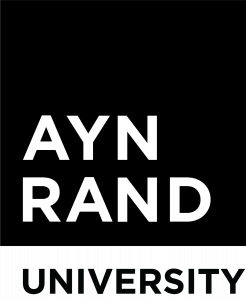Part 1 of this article explored Charles Darwin’s early life and education, the voyage of HMS Beagle, and evolutionary thinking before Darwin.
Darwin’s travels around the world and his hard work as a naturalist revealed to him new facts about life on earth. As noted above, he brought home a vast array of specimens collected from all over the globe. When he returned home and studied his collections and reflected on his findings, a host of questions arose in his mind that challenged his creationist views.
For example, why should two regions that have almost identical physical conditions be inhabited by completely different forms of life? Consider the Galapagos Islands, off the coast of South America, and the Cape Verde Islands, off the coast of Africa — both of which Darwin visited. Both are volcanic archipelagos off the west coast of a large continent; they are extremely similar in every aspect of their environmental conditions: climate, height, size, the volcanic nature of their soil, and so on. Yet the species native to these islands are completely different.
On the premise of special creation, one might expect the opposite to be true. If God designed each creature to be perfectly adapted to its environment, then one would expect that places with identical environmental conditions would be inhabited by identical species. But that is not what one finds.
Furthermore, compare the Galapagos Islands with the South American mainland. In this case, the environmental conditions of the islands are completely different from those of the mainland — and yet the species on the islands are dramatically similar to the mainland species. As Darwin later wrote: “There is nothing in the conditions of life, in the geological nature of the islands, in their height or climate . . . which resembles closely the conditions of the South American coast: in fact, there is a considerable dissimilarity in all these respects.”1 And still, he finds,
the naturalist, looking at the inhabitants of these volcanic islands in the Pacific, distant several hundred miles from the continent, yet feels that he is standing on American land. Why should this be so? Why should the species which are supposed to have been created in the Galapagos Archipelago, and nowhere else, bear so plain a stamp of affinity to those created in America?2
Again, on the premise of special creation, one would expect the opposite. One would expect regions with dramatically different environmental conditions to be inhabited by dramatically different species. But that is not what one finds.
What these facts suggested to Darwin was that the island species were related to their mainland counterparts. He envisioned volcanic islands rising out of the ocean entirely bereft of life and then being populated by colonists from the nearest coastal mainland — the Galapagos Islands by species from South America, the Cape Verde Islands by species from Africa. Breeding in isolation from their relatives on the mainland, the descendants of the colonists gradually transform and adapt to the island conditions of their new home. Ultimately, they evolve into completely new species, but continue to bear an uncanny resemblance to the species on the nearest mainland — which is exactly what one finds.
Darwin assembled and reflected on a host of facts like these from the field of biogeography, the study of the geographical distribution of living creatures. These observations raised crucial questions in his mind and got him thinking along evolutionary lines.
Consider another example: the fossil species that Darwin had unearthed in South America. These turned out to be similar in many ways to currently existing South American animals. But they were also clearly not members of currently existing species. For instance, he had found fossils of giant, extinct species of rodent, armadillo, llama, and sloth — and they were similar, but not identical, to modern species of South American rodents, armadillos, llamas, and sloths.
Embed from Getty ImagesWhy did these extinct species die out? And when were the new species “created”? More curiously, why would the earlier existing species in a given region be so similar to those living there now? That is, why do the fossil rodents of South America resemble modern South American rodents more than they do, say, European rodents or African rodents?
Again, on the premise of special creation, these questions have no answers. Darwin’s observations suggest that modern creatures are the evolved descendants of earlier ones. The South American fossil species resemble modern South American species because they are actually related to them; they are the literal ancestors of the modern forms.
Embed from Getty ImagesThese kinds of questions and considerations convinced Darwin that evolution, or “transmutation” as he called it then, might shed some light on the origin of species and was an idea worth exploring further.
In July 1837, just nine months after his return from his travels, Darwin opened a fresh notebook and wrote a single word on the title page: Zoonomia. Using a notebook expressly dedicated — in homage to his grandfather — to contemplating organic transmutation, he began, as he put it, “patiently accumulating and reflecting on all sorts of facts”3 related to the origin of species.
It is important to note that at the time Darwin began his research on evolution, he was busy with many projects. Recall that his main order of business was to supervise the analysis of his Beagle collections and to write up the results for publication. This was a huge effort that required delegating and coordinating the work of a whole team of specialist scientists.
The years immediately following Darwin’s return to England in 1836 were incredibly productive. Darwin describes them as “the most active ones which I ever spent.”4 He was editing his travel journal for publication; he was writing technical papers and presenting them before scientific societies in London; he was writing up his geological findings of the Beagle voyage; he was overseeing the publication of a set of volumes on the zoological findings of the Beagle voyage (the analyses of the animal specimens he collected were being written up as a series of expert reports); and, in 1838, he proposed to his cousin, Emma Wedgwood, whom he married in January 1839.
Clearly, Darwin had a lot on his mind. But all the while he was filling up notebook after notebook on the “transmutation” of species — collecting facts, anecdotes, questions, arguments — and thinking about them deeply. One biography reports that he was so obsessed with this work that he even took time on his wedding day to open one of his species notebooks to record Uncle Wedgwood’s “views on turnips.”5
Evidence of “Transmutation”
Like Lamarck, Darwin began to take seriously the family-tree-like structure suggested by the Linnaean system. On the theory of evolution, this structure is an actual genealogy, an actual family tree — and thinking of it that way helped to explain a host of curious facts.
For instance, people had long noticed that the bones in the forelimbs of all vertebrate animals have a common structure. This is hard to explain on the premise that they are all independently created species. But on the premise that they all inherited that bone structure from a common ancestor, it makes perfect sense. As Darwin was later to ask: “What can be more curious than that the hand of a man, formed for grasping, that of a mole for digging, the leg of the horse, the paddle of the porpoise, and the wing of the bat, should all be constructed on the same pattern, and should include the same bones, in the same relative positions?”6 Darwin collected and considered a host of facts like these from the field of comparative anatomy — and found a ready explanation for them in terms of the evolutionary family tree.
Or consider the phenomenon of rudimentary organs, such as the human appendix, or the wings of flightless birds. Darwin also knew of species of beetles whose wings are not only incapable of flight but lie under wing cases that are completely sealed shut. How can “intelligent design” explain such utterly useless organs? A typical explanation in Darwin’s day was that rudimentary organs are included to complete the “symmetry” of God’s plan, to which Darwin replied in his notebook: “What bosch!!”7
But on the premise that species are the modified descendants of earlier species, one can explain rudimentary organs as the remnants of organs that once were functional but are no longer. For example, beetles living on small and exposed islands would be in danger of being blown out to sea if they retained the power of flight. Evolution, Darwin realized, would act over time to gradually shrink the wings and render them harmless. And they certainly cannot pose a danger if they are safely sealed away under a wing case that cannot open.
Darwin collected myriad facts and posed a host of questions on the phenomenon of rudimentary organs. The winner of them all, arguably, is: “Why do men have nipples?” Pondering this question, Darwin contemplated the possibility that the distant ancestor of all mammals was a species of hermaphrodite; that is, a species possessing both male and female sexual organs. Perhaps, he mused, male nipples are just remnants of female anatomy, vestiges of the process by which an ancestral hermaphrodite species evolved into a species with separated sexes.
Darwin also pursued the subject of domestic breeding. Recall the prevailing view in his day that species possessed a limited capacity for change, that transmutation could occur only within tight limits. But if the correct explanation for the origin of all species is evolution from common ancestral forms, then species would have to be capable, given enough time, of almost unlimited change.
So Darwin sought the expertise of farmers and horticulturalists to explore the limits of organic variation. After all, one goal of expert breeders is to modify plants and animals in order to bring out desirable qualities — woollier sheep or hardier strains of wheat. Darwin began quizzing everyone he met who knew anything about domestic breeding. He spoke to gamekeepers, zookeepers, gardeners; he spoke to friends and relatives who managed their country estates; he spoke to fanciers who bred exotic varieties of pigeon; he even quizzed his London hairdresser, who was interested in pedigree dogs. He began reading magazines and manuals of all kinds on the cultivation of pigs and poultry and potatoes and more.
It is worth pausing here to reflect on just how radical Darwin’s actions were for a scientist in his day. Other “natural philosophers” contemplating such lofty questions as the origin of species would perhaps not have been as likely to step out of the ivory tower and into the barnyard. But Darwin was eager to follow the evidence wherever it led him — even if it led him to the pigpen or the fancy pigeon club.
Darwin’s investigations into domestic plants and animals gave him a great deal of data concerning variations among domestic species, and how those variations arose. He assembled and organized and reflected on these data as well as on others concerning variation in the wild.
Darwin assembled and reflected on a range of facts concerning the family-tree relationships of all creatures (the similarities and differences among organisms, such as the vertebrate hand bones or the rudimentary organs); he assembled and reflected on a range of facts concerning the fossil record; he assembled and reflected on a range of facts concerning biogeography, such as his Galapagos finches; he became, as he put it later, a “complete millionaire in odd and curious little facts.”8
Embed from Getty ImagesAnd as he put all these facts together, the outlines for a theory of evolution gradually took shape. He wrote to a friend that he had been working on a “delightful number of new views, which have been coming in, thickly and steadily, on the classification & affinities & instincts of animals — bearing on the question of species — note book after note book has been filled with facts which begin to group themselves clearly under sub-laws.”9
As he assembled these facts and identified these “sub-laws,” it became more and more plausible to him that all living species are actually related — and that evolutionary changes have occurred. What he had not yet worked out, however, was how those changes occurred. What was the causal mechanism driving evolution?
“A Theory by Which to Work”
The key to the discovery of the causal mechanism turned out to be his study of domestic breeding. He began to see domestic breeding and the cultivation of new or better varieties of plants and animals as analogous to how new varieties and species might arise in nature.
A breeder enhances a desirable quality in a breed by very carefully selecting individuals to breed together. By selecting only the best animals and breeding them together — or selecting the best fruits and cultivating only their seeds — man has improved and adapted his domestic species to suit his needs, sometimes transforming them greatly in the process.
What Darwin realized is that nature also exercises a kind of selection, and that its power of selection could also bring about great transformations. Its agent of selection is not the purposeful eye of the human breeder but the natural occurrences of disease, starvation, predation, death.
In September 1838, Darwin opened a book that had a profound impact on his thinking: An Essay on the Principle of Population by Thomas Malthus. Malthus’s book was an attempt to identify the factors limiting human population growth. He used statistical arguments to calculate the rate at which people reproduce and to compare that to the rate at which the food supply could increase. The result was a bleak, doomsday prediction that population growth would outstrip food production, leading to mass starvation, disease, and war. (When environmentalists today wail about scarce resources and issue doomsday predictions of a “population bomb,” they are sometimes criticized as being “Malthusian.”)
Embed from Getty ImagesAlthough Malthus’s conclusions are false as applied to man (because reasoning minds make possible technological innovations that invalidate Malthus’s assumed limits on the growth of food production),10 Darwin realized that Malthus’s arguments were extremely enlightening as applied to plants and animals. All living species produce many more offspring in each generation than can possibly survive; the struggle to survive is a fierce competition that most individuals will lose. Darwin saw that this would give rise to a kind of natural selection that is analogous to the selection exercised by breeders.
Darwin combined this Malthusian argument with the ideas he had already worked out concerning variation in nature and the family-tree relationships among living organisms. The result was an explanation for how evolution occurs: Organisms reproduce after their kind but with minor modifications — a certain degree of variation is always naturally occurring among individuals of the same species. Those variations will be passed on to the offspring of any individuals that survive to reproduce. But, as just noted, very few individuals will, in fact, survive to reproduce. The struggle for existence is fierce; every tiny little advantage matters; every little difference makes a difference. As Darwin explained it:
As many more individuals of each species are born than can possibly survive; and, as consequently, there is a frequently recurring struggle for existence, it follows that any being, if it vary however slightly in any manner profitable to itself, under the complex and sometimes varying conditions of life, will have a better chance of surviving, and thus be naturally selected.11
Darwin saw that the unrelenting character of the struggle for existence would imply an unrelenting process driving greater and greater diversity and complexity in nature. As small changes accumulate over massive stretches of time, competition imposes a steady pressure forcing evolutionary change. More and more diverse forms of life arise as species evolve to fill all available niches in the economy of nature. And more and more complex forms of life arise as more intricate adaptations make possible more intricate means of survival.
Darwin was finally able to explain the origin of all the various forms of life that we find in nature, in all their wondrous complexity; natural selection was the final piece of the puzzle, the basic causal mechanism driving evolutionary change. His hard work had paid off. Within two years of returning from his travels, Darwin had found an explanation for the origin of species.
Perhaps most interesting about this period is how Darwin, himself, judged the status of the theory he had discovered. At this point, Darwin did not regard evolution as a proven theory.
He had assembled and integrated enough evidence to work out the essential elements of the theory, and he had identified a plausible causal mechanism that could explain how evolution occurs. But he knew that he still had a lot of work to do to prove all the details of the theory. At this point, Darwin regarded his theory as a solid working hypothesis, or, as he later put it in his autobiography, as “a theory by which to work.”12 But it was not yet a theory that he regarded as conclusively proven.
Consider this in light of the widespread attack on evolution as “just a theory.” The careful objectivity with which Darwin assessed the cognitive status of his own work stands in such stark contrast to that utterly ignorant, knee-jerk dismissal of the theory. But polemics aside, it is interesting to consider how hard a scientist has to work even to come up with a good hypothesis — let alone to prove a fundamental theory. Darwin’s two years of determined thinking were not the end of his work on evolution; they were just the beginning.
Darwin continued to work on evolution while forging ahead with his many other projects, which dragged on and on.
Embed from Getty ImagesHe spent ten years writing up his Beagle findings. After his travel journal was published in 1839, he started putting out volumes on his geological discoveries. In 1842, he published a study of the formation of coral reefs, based partly on research he did while the Beagle stopped at a coral atoll in the Indian Ocean. In 1844, he published his observations on the geology of the volcanic islands he visited, such as the Galapagos Islands and the Cape Verde Islands. And in 1846, he published his observations on the geology of South America.
Amidst all of this, he continued accumulating facts, considering objections, and developing his arguments on evolution. In 1842, he wrote a brief, 35-page abstract of the theory, which he expanded in 1844 into a 231-page “sketch.” But he was still not yet ready to go public with it. He put the sketch in his desk drawer, with a note to his wife instructing her to arrange for its publication “in case of my sudden death.”13 And he continued gathering facts and developing his arguments.
By 1846, his geology books were done; he was almost finished with the Beagle work; and he was almost ready to turn his attention full-time to the “species question” — almost ready, because one more little piece of the Beagle work was left to complete.
End of Part 2. Read Part 3.
Subscribe to New Ideal to receive the latest in-depth content from ARI.
Readers seeking a superior print result may wish to download the free Just Read app.
Do you have a comment or question?
Endnotes
- Darwin, The Origin of Species, 316.
- Darwin, The Origin of Species, 316.
- Darwin, The Origin of Species, 11.
- Darwin, Autobiography, 82.
- Adrian Desmond and James Moore, Darwin (New York: Norton, 1991), 279.
- Darwin, The Origin of Species, 343.
- Desmond and Moore, Darwin, 272.
- Desmond and Moore, Darwin, 324.
- Janet Browne, Charles Darwin: Voyaging (Princeton, NJ: Princeton University Press, 1995), 382.
- https://newideal.aynrand.org/new-book-challenges-fears-of-overpopulation-climate-change/
- Darwin, The Origin of Species, 14.
- Darwin, Autobiography, 120.
- Browne, Charles Darwin: Voyaging, 446.








